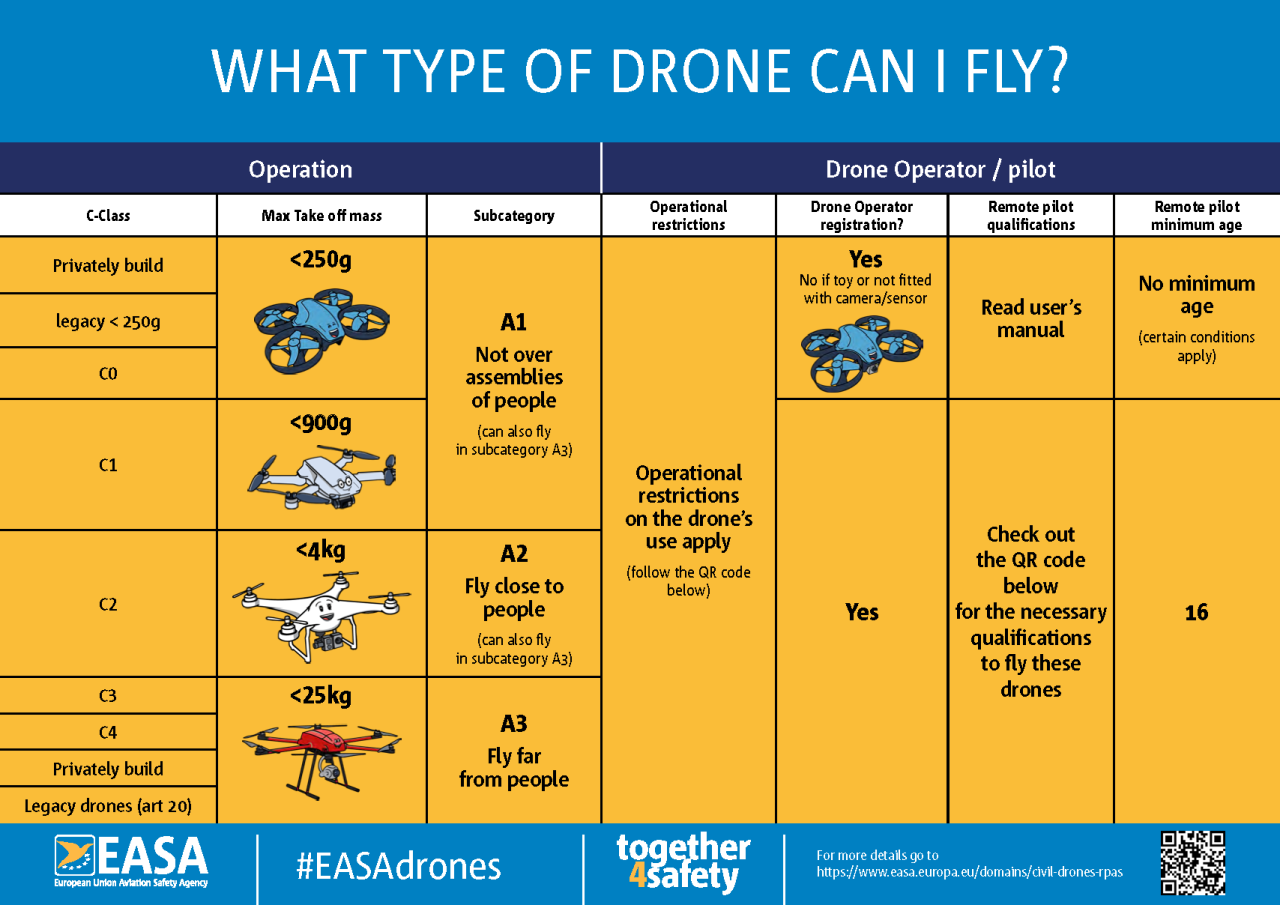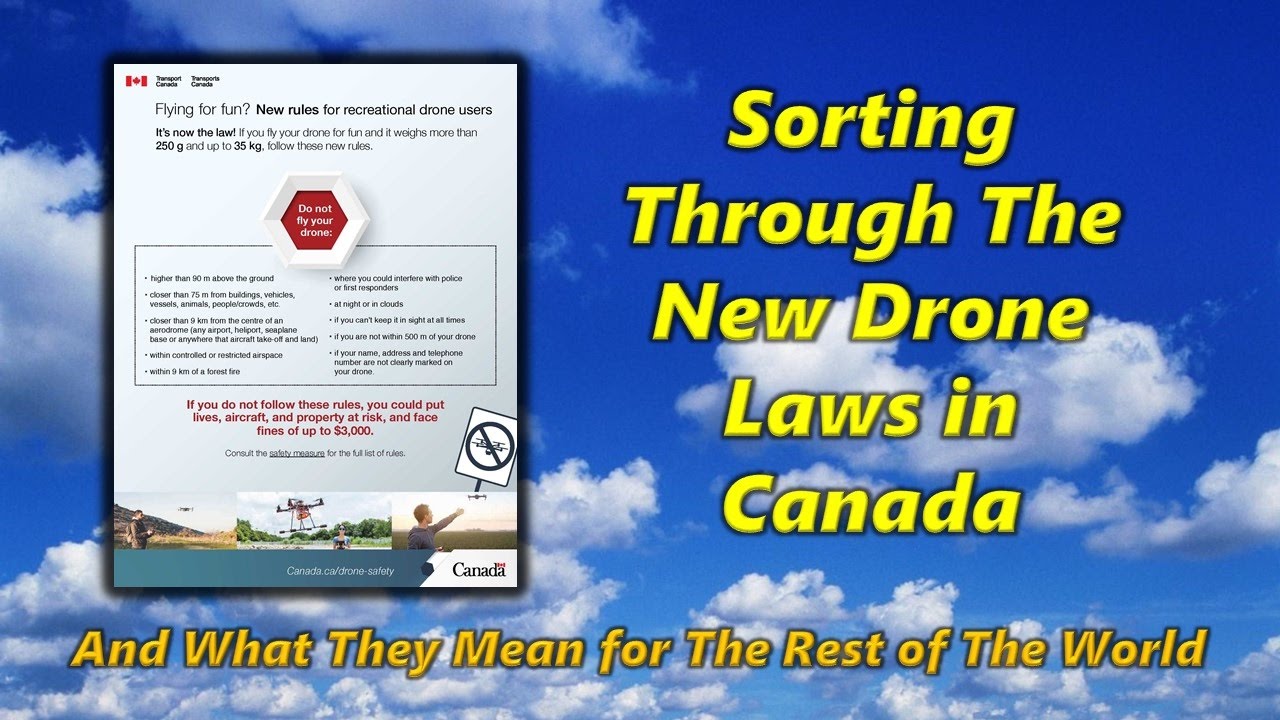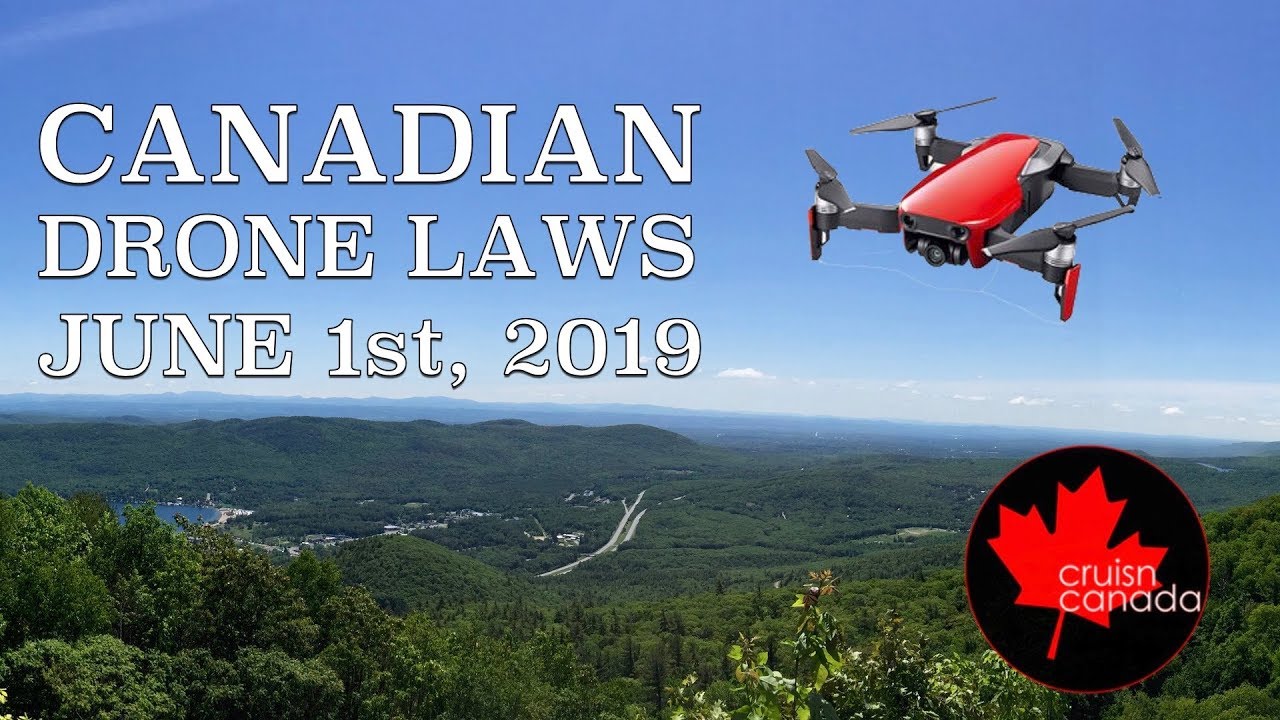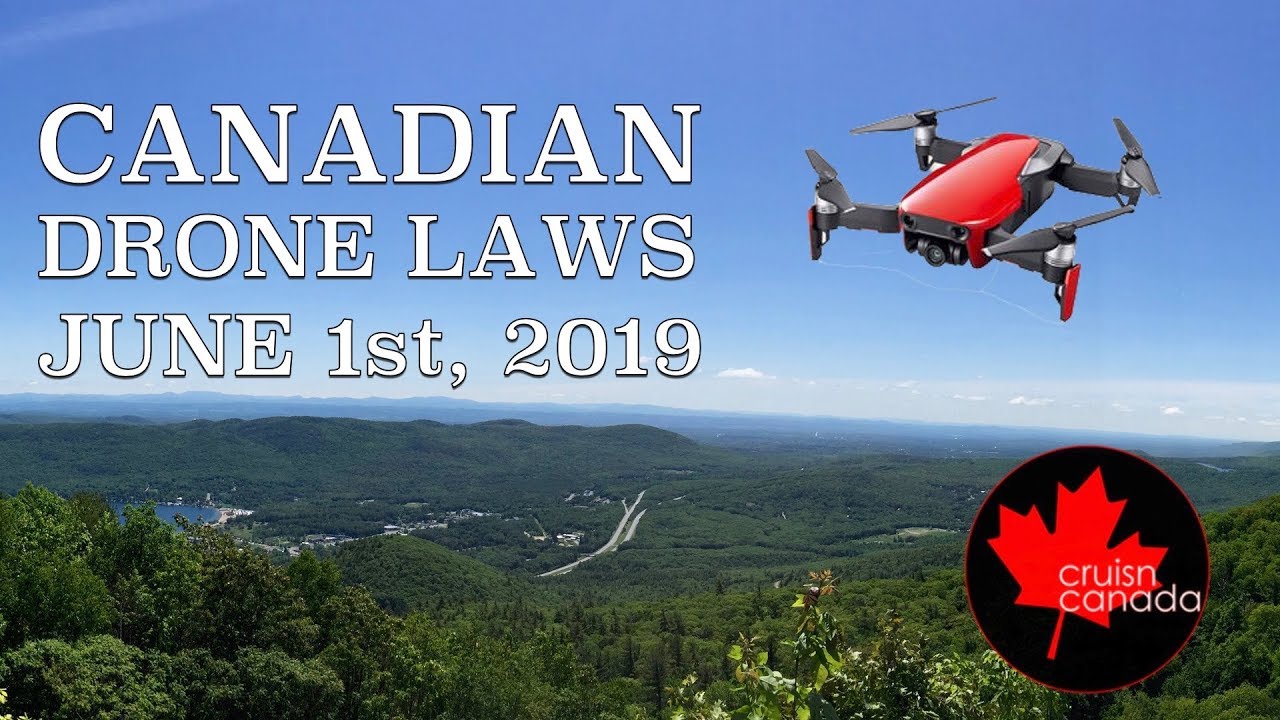New Drone Rules Canada are changing the game for drone enthusiasts and professionals alike. This guide breaks down the updated regulations, covering everything from registration and licensing to operational restrictions and privacy concerns. We’ll explore the rationale behind these changes, examine the impact on various industries, and look ahead to future trends. Get ready to navigate the new airspace with confidence!
Understanding these new rules is crucial, whether you’re a recreational flyer, a commercial operator, or simply curious about the evolving landscape of drone technology in Canada. We’ll cover the key changes, explain the licensing process, and clarify the penalties for non-compliance. We aim to provide a clear and concise understanding of what you need to know to fly legally and safely.
Overview of New Drone Regulations in Canada
Canada’s drone regulations have undergone significant updates to enhance safety and address emerging concerns. These changes impact various drone categories and aim to balance innovation with responsible operation. The key changes affect registration, licensing, operational restrictions, and data privacy.
Key Changes in Drone Regulations
The updated regulations introduce stricter requirements for drone registration and licensing, expanding the categories of drones requiring licensing. They also define more precisely restricted airspace and operational guidelines to mitigate safety risks and privacy concerns. Penalties for non-compliance have also been increased.
Categories of Drones Affected
The new rules affect all classes of drones, from small recreational models to large commercial systems. The specific requirements vary depending on the drone’s weight, intended use, and operational environment. Micro drones, previously largely unregulated, now fall under specific operational guidelines.
Rationale Behind Changes
The amendments aim to improve safety by preventing accidents, protecting privacy by limiting unauthorized data collection, and facilitating the safe integration of drones into Canadian airspace. The increase in drone usage necessitated clearer guidelines to address potential risks.
Comparison of Old and New Regulations
| Regulation Aspect | Old Rule | New Rule | Impact |
|---|---|---|---|
| Drone Registration | Voluntary for most drones | Mandatory for most drones above a certain weight | Increased accountability and traceability of drone operators |
| Licensing | Limited licensing requirements | Expanded licensing categories based on drone class and operation type | Enhanced operator competency and safety standards |
| Operational Restrictions | Relatively broad guidelines | More specific restrictions on airspace and operational parameters | Improved safety and reduced risk of accidents |
| Penalties | Relatively low penalties | Significantly increased fines and potential legal action | Stronger deterrent against irresponsible drone operation |
Drone Registration and Licensing Requirements
The process for registering a drone and obtaining the necessary license involves several steps and depends on the drone’s classification and intended use. Failure to comply results in substantial penalties.
Drone Registration Process
Registration involves providing information about the drone and the owner through an online portal. This provides a record of ownership and helps authorities track drones in case of accidents or misuse. A unique registration number is issued upon successful registration.
- Visit the Transport Canada website.
- Create an account and provide personal information.
- Enter drone details, including serial number and weight.
- Pay the registration fee.
- Receive a registration number.
Drone License Types and Requirements
Different drone licenses exist, depending on the drone’s weight, intended use (recreational, commercial), and operational complexity. Each license requires specific training and testing to ensure competency and safety.
Penalties for Non-Compliance
Operating a drone without proper registration or licensing can result in significant fines, legal action, and even potential criminal charges. The penalties vary depending on the severity of the infraction.
Operational Restrictions and Safety Guidelines

Safe and responsible drone operation is paramount. Numerous restrictions and guidelines exist to prevent accidents and ensure public safety. Understanding these rules is crucial for all drone operators.
Restricted Airspace Zones
Numerous areas in Canada have restricted airspace, including airports, military bases, and sensitive infrastructure. Operating a drone in these zones is strictly prohibited and can result in serious consequences.
Safety Guidelines

Maintaining visual line of sight (VLOS) with the drone at all times, respecting privacy, and avoiding populated areas are essential safety guidelines. Operators must also be aware of weather conditions and potential hazards.
Operational Restrictions by Drone Class
Operational restrictions vary based on drone class. Larger, heavier drones generally have stricter regulations regarding operational altitude, distance from obstacles, and required pilot qualifications.
Examples of Unsafe or Illegal Drone Operation, New drone rules canada
Flying a drone near airports, operating without proper authorization, exceeding altitude limits, or failing to maintain VLOS are examples of unsafe or illegal drone operation.
Privacy Concerns and Data Protection
Drones can collect significant amounts of data, raising privacy concerns. The new regulations address these concerns by outlining procedures for data collection and responsible data handling.
Legal Implications of Data Collection

Using drones for surveillance or data collection without proper authorization can lead to legal repercussions. Operators must comply with privacy laws and obtain consent before collecting personal information.
Addressing Privacy Concerns
The regulations emphasize the importance of obtaining consent before collecting data using drones. Operators should inform individuals about the data collection and its purpose. Data should be handled responsibly and securely.
Okay, so Canada’s got these new drone rules, right? They’re pretty strict, covering everything from registration to where you can fly. It’s a bit like the intense rules in that show, squid game histoire vraie , although thankfully the penalties aren’t as deadly. Understanding these new regulations is key to avoiding trouble, so make sure you check them out before taking your drone for a spin.
Procedures for Obtaining Consent
Consent must be informed and freely given. Operators should clearly explain how the data will be used, who will have access to it, and how it will be protected.
Best Practices for Responsible Data Handling
- Minimize data collection to only what is necessary.
- Securely store and protect collected data.
- Comply with all applicable privacy laws.
- Anonymize data whenever possible.
Enforcement and Penalties for Non-Compliance
Transport Canada and other relevant authorities are responsible for enforcing the new drone regulations. Various penalties are in place to deter non-compliance.
Enforcement Mechanisms
Enforcement involves inspections, investigations, and the imposition of penalties for violations. Authorities may use various methods to detect and address violations, including public reporting and drone detection technologies.
Range of Penalties
Penalties can include significant fines, license suspension or revocation, and even criminal charges for serious violations. The severity of the penalty depends on the nature and extent of the infraction.
So, you’re brushing up on the new drone rules in Canada? It’s a good idea to stay informed about regulations, especially considering the amazing technological advancements. Check out the scale and spectacle of drone technology at the shanghai drone show , it’s a great way to see what’s possible. Then, armed with that inspiration, you can confidently navigate the Canadian drone landscape and fly safely and legally.
Real-World Cases of Drone Misuse
Several high-profile cases involving drone misuse have highlighted the importance of strict regulations and enforcement. These cases demonstrate the potential consequences of irresponsible drone operation.
Summary of Infractions and Penalties
| Infraction | Penalty Type | Maximum Fine | Other Consequences |
|---|---|---|---|
| Operating without registration | Fine | $3,000 | License suspension |
| Flying in restricted airspace | Fine | $10,000 | Criminal charges (potential) |
| Privacy violation | Fine | Variable | Civil lawsuits (potential) |
Impact on Various Drone Industries: New Drone Rules Canada
The new regulations will significantly impact various sectors using drones, including commercial, recreational, and research applications. The effects are varied and complex.
Impact on Commercial Drone Industry
Commercial drone operators will need to adapt to the new licensing and operational requirements. This may increase operational costs but also enhance safety and public trust.
Impact on Recreational Drone Users

Recreational users will need to register their drones and may face restrictions on where and how they can fly. This promotes responsible usage and minimizes the risk of accidents.
Impact on Drone Research and Development
Research involving drones will need to comply with the new regulations, potentially impacting project timelines and costs. However, clear guidelines facilitate responsible research and innovation.
Benefits and Challenges of New Rules
The regulations present both benefits (increased safety and accountability) and challenges (increased costs and complexity). A careful balancing act is required to foster innovation while maintaining public safety.
Future Trends and Potential Changes to Drone Regulations
The rapid advancement of drone technology necessitates ongoing evaluation and potential updates to the regulations. Future trends and technological developments will shape the regulatory landscape.
Canada’s new drone rules are stricter than ever, aiming to prevent accidents and ensure safe airspace. Understanding these regulations is crucial, especially considering incidents like the tragic fullerton plane crash , which highlights the potential consequences of irresponsible drone operation. So, before you fly, brush up on those new rules to keep yourself and others safe in the sky.
Future Developments in Drone Technology
Advancements in autonomous flight, drone swarms, and beyond visual line of sight (BVLOS) operations will require further regulatory adjustments to address safety and security concerns.
Potential Areas for Regulatory Revision
Areas needing potential revision include BVLOS operations, drone swarm management, and the integration of drone traffic management systems (UTM).
Challenges in Adapting Regulations
Keeping pace with technological advancements presents a significant challenge. Regulations must be flexible enough to adapt to new technologies while maintaining safety and security.
Potential Future Amendments
- Updated licensing requirements for BVLOS operations.
- Regulations for drone swarm management.
- Integration of UTM systems into regulatory frameworks.
- Clarification on data privacy for advanced drone applications.
Outcome Summary
Navigating the updated Canadian drone regulations requires careful attention to detail, but with a little preparation, safe and legal drone operation is achievable. Remember to always prioritize safety, respect privacy, and stay informed about any future changes. By understanding the rules and adhering to them, you can contribute to a responsible and thriving drone community in Canada. Happy flying!
Helpful Answers
What types of drones are affected by the new rules?
The new rules affect all types of drones, from small recreational models to large commercial drones. The specific regulations vary depending on the drone’s weight and intended use.
How much does drone registration cost?
The cost of drone registration in Canada varies. Check Transport Canada’s website for the most up-to-date fee information.
What happens if I fly my drone without a license?
Flying a drone without the proper license can result in significant fines and potential legal action. Penalties vary depending on the severity of the infraction.
Where can I find a list of restricted airspace zones?
Transport Canada’s website provides a map and information about restricted airspace zones in Canada. You should always check this before flying your drone.
Do I need insurance to fly a drone commercially?
For commercial operations, insurance is highly recommended and may be required depending on the nature of your work. Check with your insurance provider for specific requirements.
